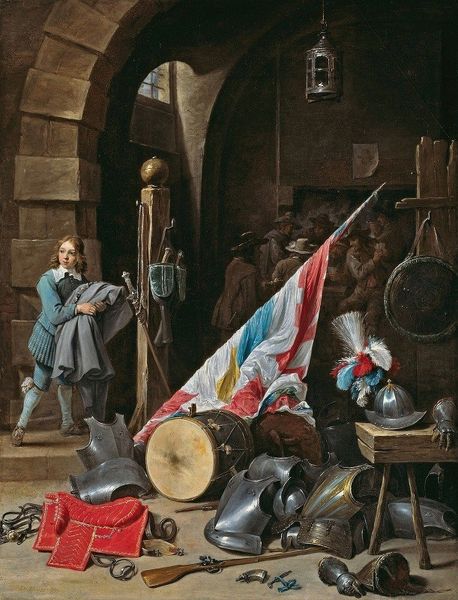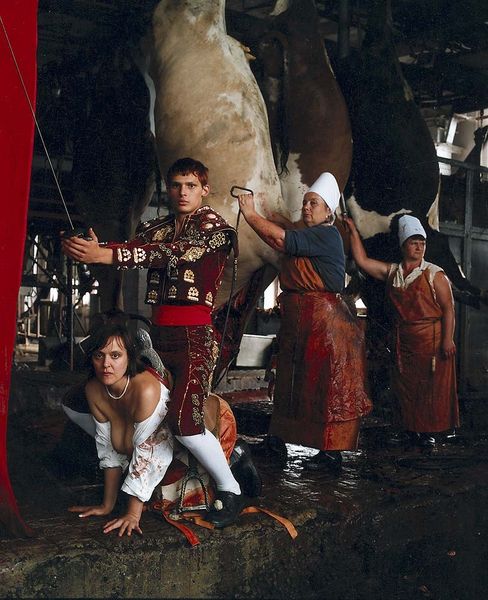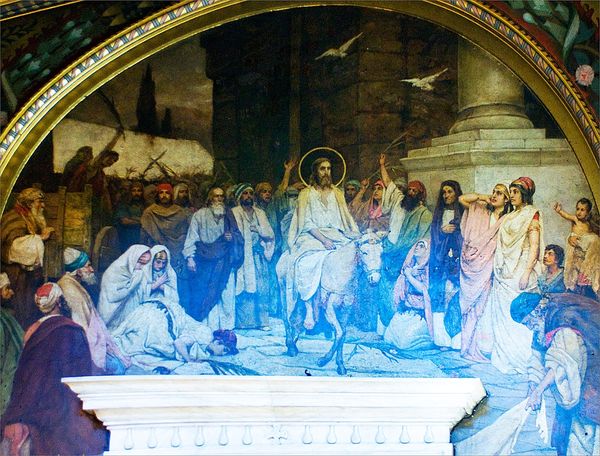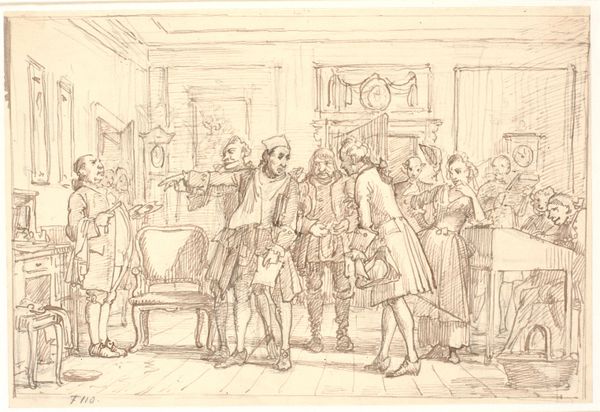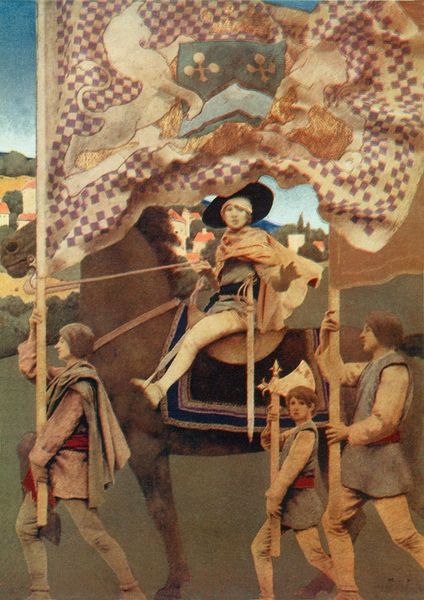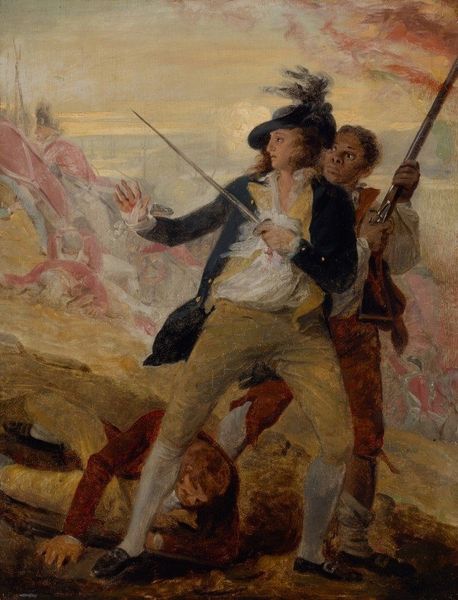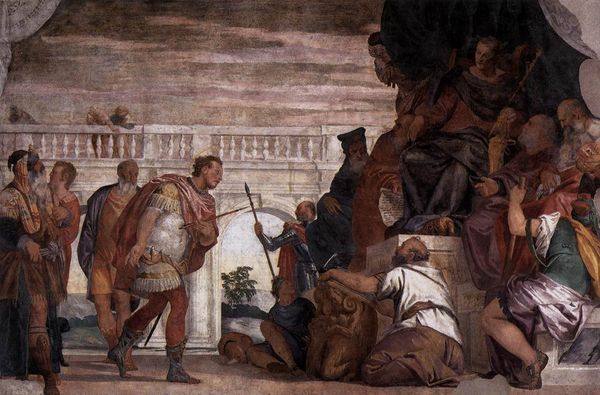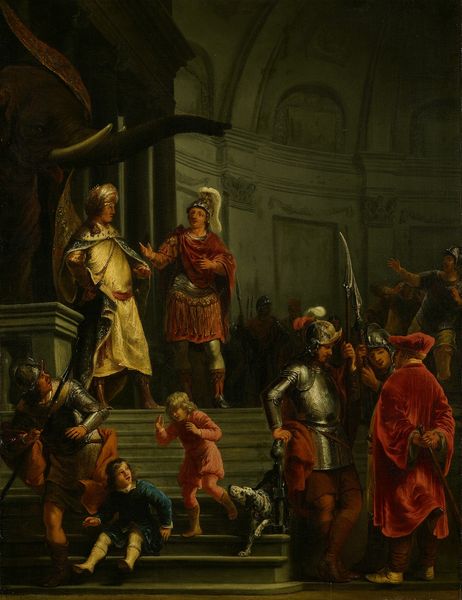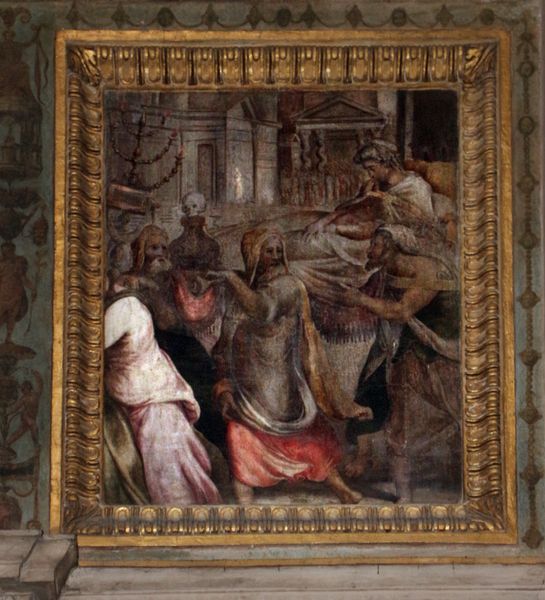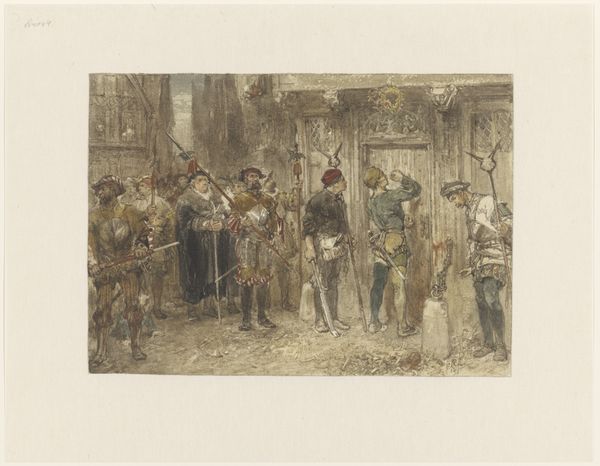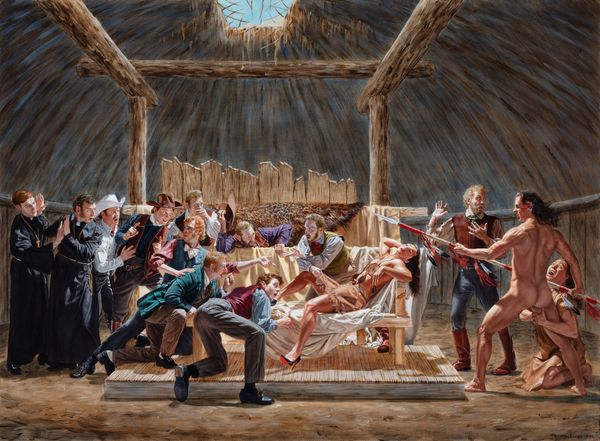
photography
#
abstract painting
#
water colours
#
possibly oil pastel
#
photography
#
handmade artwork painting
#
oil painting
#
earthy tone
#
underpainting
#
painting painterly
#
person holding a poster
#
watercolor
Copyright: Public domain
Curator: Standing before Édouard Debat-Ponsan’s “The Cardinal Étienne-Charles de Loménie de Brienne," painted in 1896, I can't help but feel the artist wants us to question the relationship between power and creation. Editor: It hits you immediately, doesn't it? It has that almost staged quality of history painting. Yet, the almost ethereal treatment of the background makes the whole image seems caught between the real and the ideal. Curator: Precisely! There’s a real tension in this composition. On one side, we have the Cardinal and his entourage – symbols of established authority. On the other, we have the sculptors laboring on this colossal artwork. The relationship feels unequal, like a transaction where artistic expression is subservient to power. What do you make of the somewhat theatrical setup? Editor: It underscores a fundamental truth: art is never created in a vacuum. Loménie de Brienne was, of course, a key figure in pre-Revolutionary France, known for his attempts at reform and ultimately his failure. His presence here, overseeing the creation of… well, what seems to be a representation of France itself, is ripe for analysis. The male gaze is also pretty evident, shaping not only the artwork but also the historical narrative, wouldn’t you say? Curator: I do. There’s a subtle commentary on the performative nature of power. And, as an artist, the slightly blurry line between historical documentation and artistic license really fascinates me here! Do you sense a judgment being passed by Debat-Ponsan himself, or is he merely a detached observer? Editor: Both, I think! Debat-Ponsan seems keen to interrogate the complexities inherent in the power dynamics and to leave us with a question. The gazes, postures, and placement all work to this goal! Curator: Looking at the rather muted palette and the soft rendering of figures, perhaps Debat-Ponsan aimed for something beyond pure political critique. The artist wanted to examine history with nuance rather than simply condemn it. Editor: That is absolutely correct. Seeing this through the lens of intersectionality brings the themes to life, which ultimately elevates this canvas beyond just a period piece! Curator: I see what you mean. I find it remarkable how Debat-Ponsan lets the painting itself become a platform for conversation. Editor: Yes. It’s like Debat-Ponsan invited us to a historical tableau and encouraged us to rearrange it to unveil our hidden prejudices.
Comments
No comments
Be the first to comment and join the conversation on the ultimate creative platform.
